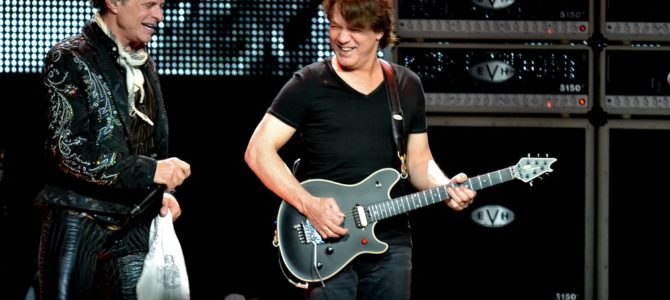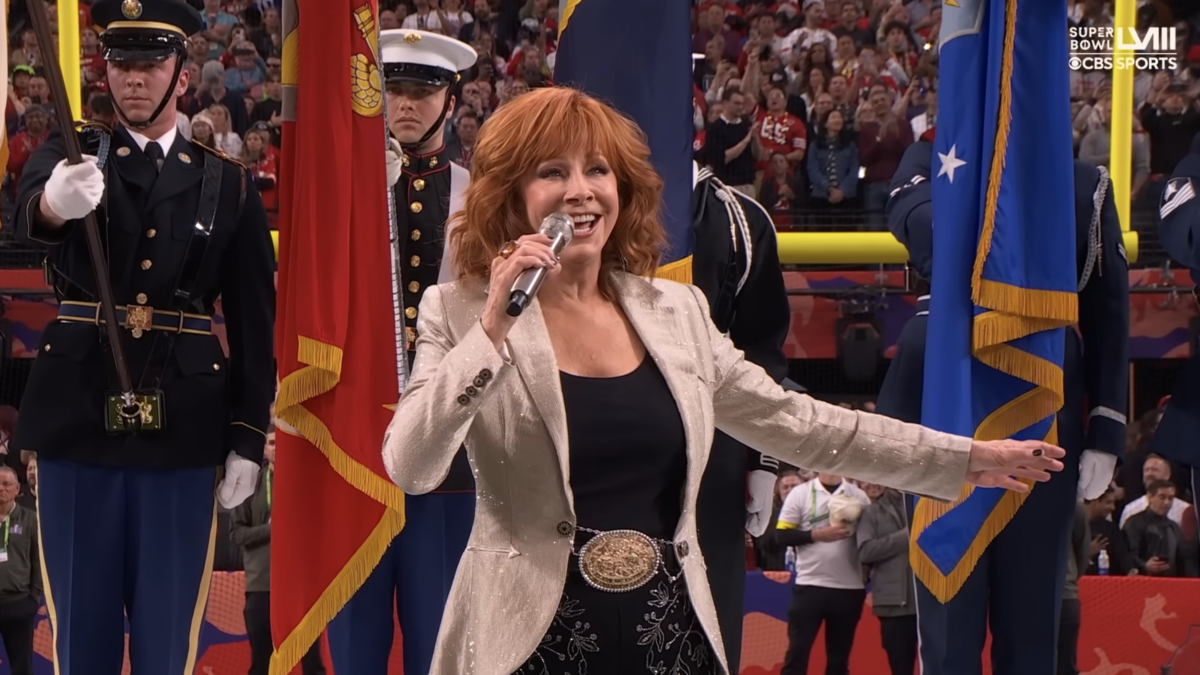Eddie Van Halen, guitarist and American original, is dead at age 65 and there’s no possible coda for a musical legacy this big. Most people spend their entire lives trying to achieve some measure of immortality. It only took Edward Lodewijk van Halen one minute and 42 seconds.
That’s the length of “Eruption,” the short guitar solo piece that is the second track on Van Halen’s eponymous 1978 debut. It starts off with some fast pull-off licks punctuated by some pinch harmonics, and then some whammy bar dive bombs that sound like his guitar amp is about to explode. That’s probably because the amp was, in fact, being thoroughly abused. To get his famously heavy and overdriven “brown sound,” EVH pulled two of the four glass vacuum tubes out of his Marshall amplifier and used a device called a variac to starve the amplifier of voltage.
After introducing all this glorious noise, the virtuoso did something truly revolutionary – he broke into super-fast neoclassical arpeggiation. The classical influence was no accident. At one point in “Eruption,” Van Halen, whose Dutch father was a classically trained multi-instrumentalist, quotes a phrase from “Etude No. 2” by Rodolphe Kreutzer in the guitar-friendly key of E flat. The Van Halens immigrated to California when Eddie was seven, arriving “with approximately $50 and a piano,” according to Eddie.
This section of the song stunned listeners, and baffled guitar players who couldn’t figure out how he played the section so cleanly and so fast. There were wild rumors about what he was doing – did he amplify a dulcimer or a Kyoto? – surely something that fast couldn’t be played on guitar.
But it could, and Eddie Van Halen had done it. Instead of plucking or strumming the strings below the fretboard of the guitar, he took his right hand and began tapping notes on the fretboard, while still using his fretting hand to hammer on and pull off notes. Tapping, as it’s now called, is now ubiquitous in the guitar world, but at early gigs, Eddie Van Halen was notorious for turning his back to the audience so other guitarists couldn’t steal his signature technique.
This odd little album interstitial, both in its crushing, previously unheard guitar tone and innovative technique, is probably the most significant instrumental in the history of rock, and there’s a strong case to be made it’s the most influential piece of rock music of the last 42 years, period. This achievement is all the more remarkable when you consider “Eruption” is not even a song per se. Its impact is purely a matter of impressionistic sonics and forceful virtuosity.
As ’70s rock bands go, Van Halen weren’t exactly innovative songwriters in a decade where prog rock and the anthemic complexity of Led Zeppelin were ascendant. If “Eruption” gets any radio airplay at all, it’s because it bled into the band’s affable cover of The Kinks’ “You Really Got Me,” which, even buoyed with Eddie’s riffage, isn’t exactly the sound of a band reinventing the wheel.
Of course, Van Halen had other noteworthy hits from their first record – “Running With the Devil,” “Janie’s Cryin’” and “Ain’t Talkin’ Bout Love,” the latter which begins with an A minor to G to F riff run through a phaser that was also essential for defining Eddie Van Halen’s sound.
But it was “Eruption” that single-handedly invented guitar-shredding – a foundational element of the hair metal that dominated the airwaves in the decade to come. Similarly, EVH’s heavy tone and the fluid contrast between palm-muted riffing and soloing in higher registers would also have a profound influence on the underground metal bands of the ’80s such as Metallica and Slayer, to say nothing of the sound of the grunge bands more than a decade later.
The grunge influence was somewhat ironic, as grunge was presented as a musical emetic for all the artistic excesses of the hair metal that came in Van Halen’s wake. You could decry the soulless guitar wankery that Van Halen inspired, but after a decade of Van Halen permanently on the charts, there was simply no way to play rock and roll guitar without internalizing aspects of Eddie Van Halen’s playing.
EVH had a simply stellar, and somewhat loose sense of rhythm – indeed, one of Van Halen the band’s chief virtues is that they are the rare hard rockers that swung – that prevented his most show-offy parts from sounding flat and unmusical. The same cannot be said of a great many mechanical guitar shredders who drafted behind him.
Even today it’s a running joke on Guitar Player magazine’s excellent “No Guitar Is Safe” podcast that it’s impossible to interview any notable guitar player who works in any genre, be it jazz fusion or neo-soul, for more than an hour without Eddie Van Halen’s name coming up. Of course, even those who have zero interest in the technical aspects of guitar playing are aware of EVH’s cross-cultural influence in one significant way — the unmistakably EVH solo on Michael Jackson’s “Beat It.”
The story goes that Eddie Van Halen, who was never really a session player, didn’t want to solo against the section of the song that had been cued up for him. He wanted to solo against the chord changes in the verse, so he ended up rearranging the song in the studio without Quincy Jones and Michael Jackson knowing he was messing with the track. After he was done, the song had to be stitched back together with quite a bit of clever engineering, which was not easy in the days everything was recorded to magnetic tape. But the solo EVH came up with was so memorable and well-phrased, no one disputes it’s a highlight of Thriller, the second-bestselling record of all time.
There’s a lot more that could be said about Van Halen the band’s impact, as their goofy, sex-obsessed image was definitely a polarizing part of their image. The lyrics and video for “Hot For Teacher” were actually debated in congressional hearings about the need for labeling explicit rock lyrics.
On the other hand, the fact that “Eruption” was an aberration and Eddie Van Halen otherwise worked to showcase his chops in very tuneful pop music settings is the reason Van Halen has sold more than 75 million records, instead of merely a being an influential virtuoso. (A word must also be said for the Sammy Davis Jr.-meets-Jeff Spicolli charisma of David Lee Roth, and the rock-solid musicianship of bassist Michael Anthony and Eddie’s brother Alex on the drums.)
Van Halen may have played loud and heavy, but they felt light-hearted and fun. As an email acquaintance put it, “There’s a time and a place for Black Sabbath, but at a party, do you really want to bum out the ladies cranking ‘Hand of Doom?’ No way man! Fire up Diver Down and let’s rage!”
To Eddie’s credit, he was also not content to rest on his guitar laurels – the band’s biggest selling album, 1984, came after he was frustrated that Roth and Ted Templeman, the producer of the band’s first five records, were discouraging his desire to experiment with keyboards. He started producing and writing in his own studio, and the results included “Jump,” which has one of the most memorable synth hooks in the decade keyboards were ubiquitous.
Unfortunately, the tensions over the 1984 record couldn’t be resolved and Roth left the band, giving way to the era many Van Halen fans derisively refer to as “Van Hagar.” While it was certainly a change for the band, Sammy Hagar is an able frontman and the slickly produced ear candy that followed is not without its charms and saw the band branching out. Songs like “Finish What You Started” and “Right Now” were welcome diversions from the band’s hard rock formula, not that Van Halen ever stopped rocking. (Older readers might recall “Right Now” was the soundtrack for the ad campaign for the briefly ubiquitous but ultimately disastrous launch of Crystal Pepsi.)
Unfortunately, the ego that drove Eddie Van Halen to success – and ego was certainly a problem for other members of Van Halen as well – kept getting in the way. The 1995 record Balance was the last to feature Sammy Hagar, and then there was an ill-fated dalliance with Extreme vocalist Gary Cherone that lasted one album. In 2004, Eddie kicked Michael Anthony out of the band so his son Wolfgang could take over bass duties in Van Halen, angering many longtime fans, to say nothing of the fact that Anthony’s great high harmonies were a crucial part of the band’s sound.
Also worth mentioning is that starting in the ’90s, while the band was beginning to founder a bit, Eddie Van Halen turned a lot of attention to the design of his signature guitars, amplifiers, and other guitar gear. While his self-painted guitars from his early career, especially the red white and black striped patterned “Frankenstrat,” are holy relics of the guitar world, in the 1990s a more mature Eddie Van Halen started rethinking his approach to his instrument.
The result was the refined-but-aggressive “Wolfgang” guitar design, which is now iconic in a world where most guitar players are averse to playing any guitar design that doesn’t date back to the 1950s. And the ongoing iterations of his ’90s-era 5150 amplifiers, which had an even more distortion-saturated sound, are still beloved by heavy metal players. The EVH guitar brand is now what Air Jordan is to athletic wear.
The oughts saw two reunion tours – one each with Hagar and Roth. While these tours were transparently mercenary, and say what you want about Van Halen’s inability to keep a consistent lineup, the band always triumphed live, in no small part because Eddie Van Halen was a force of nature. If you’ve ever played live, you know it’s not easy for one guitarist to fill up the sonic space in a four-piece band.
The story goes that when EVH saw Led Zeppelin live in the ’70s, he was profoundly disappointed that his guitar idol Jimmy Page couldn’t quite carry off the band’s ambitious recordings live. Eddie was such a force of nature that no one who ever saw Van Halen live walked away thinking he couldn’t pull it off.
By 2012, Eddie seemed to have some kind of genuine artistic and personal reconciliation with Roth, resulting in the band’s last proper album, A Different Kind of Truth. It’s an underrated gem; Roth’s harmonies on the first single, “Tattoo,” along with Eddie’s driving riff on “She’s The Woman,” would have been right at home in the band’s early catalog. By then, the pop music world was over hard rock, but go ahead and watch the crowd lose their mind during their kick-ass performance of “Panama” at the 2015 Grammys. Even late in their career, appreciation for Van Halen remained undimmed and universal.
As for Eddie Van Halen’s personal life, there were the rock star ups and downs. Despite enduring various substance abuse-related issues that tested their marriage, he was married to actress Valerie Bertinelli for 26 years, divorcing her in 2006. Van Halen went to rehab in 2007 and got sober, and his relationship with Bertinelli remained very amicable.
She was in attendance when he remarried to publicist Janie Liszewski in 2009, and reportedly among the friends and family at his bedside when he died of oral cancer. An inveterate smoker for much of his life, he was first diagnosed with oral cancer in 2000 and after being successfully treated, the disease reared up again in 2014. He had reportedly been fighting throat cancer for the last six years when he died on October 6.
Whatever personal and professional demons Eddie Van Halen faced in life, family was always very important to him. His exceptionally close bonds with his son and brother meant everything. In 2017, Eddie Van Halen was interviewed by the Smithsonian as part of a series on “What it means to be an American.” He was asked by a member of the crowd, “Of all the deceased musicians out there that are no longer around, if could you pick one to play with, who would that be?”
The weight of his own mortality was no doubt hanging in his mind in ways that the audience couldn’t have known. “Wow,” he said, taking a beat. “I’d like to jam with my father again.”
Maybe now he’ll get the chance. Rest in peace, Eddie.









